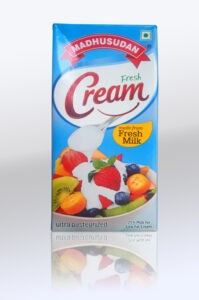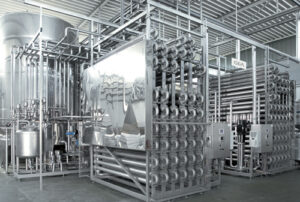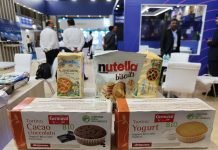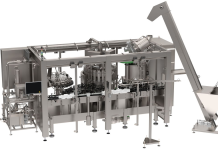
Düsseldorf, 22 April 2021, GEA India has won the order to supply a complete ultra-high temperature (UHT) production line for Creamy Foods in Uttar Pradesh. Best known for its brand ‘Madhusudan,’ Creamy Foods is one of the leading dairy players in the country. About 140 kilometers south of the Delhi NCR, its new plant is one of the largest of its kind in India. And, it opens a new market for UHT technology for GEA in the region. While the contract was signed in February 2020, the plant is now under delivery.
Creamy Foods manufactures a wide range of dairy products at its processing unit in Khurja in Uttar Pradesh, including plain milk, ghee, paneer, curd, cooking cream, buttermilk, and milk powder. GEA, which maintains a strong relationship with the company, has supplied a wide range of state-of-the-art dairy processing equipment to it in the past. GEA’s experience with similar standalone UHT plants across the Asia Pacific region was a critical factor in Creamy Foods’ decision to choose GEA in a highly competitive market.
The scope of work includes the supply of a complete UHT line with a proprietary direct steam infusion technology. The line will have a milk processing capacity of 15,000 liters of milk an hour, making it one of the largest standalone UHT milk processing plants in the Indian dairy sector. The complete system, which consists of an indirect UHT combined with a direct infusion high heating module, will be designed and supplied by the GEA Aseptic Competence Center in Ahaus, Germany. The aseptic tank, one of the most critical pieces of equipment, will be delivered from the company’s state-of-the-art manufacturing facility in Vadodara, Gujarat.

Environmental efficiency with 88% heat recovery
Its hybrid type or capabilities characterize this plant. While it can process high-quality products with gentle, direct infusion technology, it can also switch to the highly efficient indirect mode to process standardized quality products. In addition, indirect heating and cooling through special tubular heat exchangers, designed by GEA for high heat recovery of about 88% over the entire production run, allows cost savings and an environmentally friendly solution for today’s ecological needs. It provides a highly effective ratio of volume to heat exchange area to guarantee optimized product quality and high heat recovery with low steam and cooling water consumption.

“We appreciate the innovative and sustainable technologies from GEA and are very satisfied with the performance of dairy processing equipment supplied in the past. For this reason, we are convinced that we have chosen the right partner for our new plant,” remarked Amit Agarwal, managing director, Creamy Foods.
GEA partnering for more sustainability
“We are really happy to partner with Creamy Foods once again with our most innovative solution for UHT technology. The dual-mode operation makes it a perfect fit for the customer to differentiate their product and take care of consumer’ taste preferences. It has the lowest utility consumption, making it more economical and sustainable in the long run,” said Suket Gohil, Country managing director, GEA India.
Growing popularity

Around 34% of liquid milk consumption worldwide is UHT, with the Asia Pacific region being one of the top three regions and increasing consumption. Once packed, the product has a shelf life of up to nine months at ambient temperature, making it as practical as it is nutritious, especially where cold chain distribution is difficult to maintain.
(Based on a press release this article has been edited by Naresh Khanna for publication on IndiFoodBev and Packaging South Asia.)











